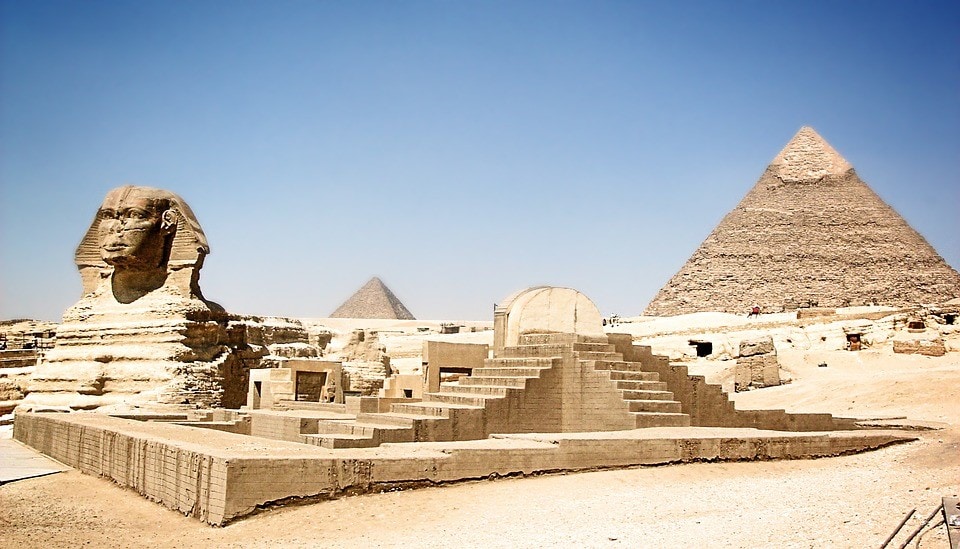How Many Wonders of the World Are There?
If you ask your students what the Seven Wonders of the World are, they could give you upward of forty-nine answers, and they would all be correct! That’s because there have actually been numerous lists created over time. The original Seven Wonders of the World is now usually referred to as the Seven Wonders of the Ancient World, as all but one site has been destroyed, and another is rumored to have never existed at all. (Do you know which ones?)
Since people like travelling, it was thought that there should be a new list created for the world as we know it today. This way people could go and visit these destinations to cross them off their bucket-list. However, deciding on which sites get to make the cut has been quite the challenge.
What are the criteria for a site to be considered a world wonder? Inspire your students to get curious about the world around them by learning about some of these lists, and maybe even devising one of their own! What criteria do they deem the most important? Let’s take a look at what some other people have come up with to get started.

- The Seven Wonders of the Ancient World
This is the one that started it all, and it was created by the Ancient Greeks in 225 BCE! The original name in Greek is themata which translates to must-sees. The Seven Wonders of the Ancient world are: the Great Pyramid at Giza (Egypt), the Hanging Gardens of Babylon, the Statue of Zeus at Olympia (Greece), the Temple of Artemis at Ephesus, the Mausoleum at Halicarnassus, the Colossus of Rhodes, and the Lighthouse of Alexandria (Egypt).
Which one is still around today? If you said the Great Pyramid at Giza, then you are correct. Fascinatingly, it is also the oldest on the list. Which one may not have existed at all? That would be the Hanging Gardens of Babylon, as archeologists have yet to find any substantial evidence alluding to its existence. As for the others, they were all destroyed by way of battles, or acts of God. (or Gods!)

- The Seven Wonders of the Modern World
This list was developed by the American Society of Civil Engineers in 1994. They looked to pay homage to marvels of engineering: the Channel Tunnel (England/France), the CN Tower (Canada), the Empire State Building (USA), the Golden Gate Bridge (USA), the Itaipu Dam (Brazil/Paraguay), the Netherlands North Sea Protection Works (Netherlands), and the Panama Canal (Panama).

- The Seven Wonders of the Natural World
The name says it all, the Seven Wonders of the Natural World is designed to honour mother nature. Since nature offers us such a vast array to choose from, there have been many competing lists. One of the most popular is the one compiled in 1997 by CNN: The Grand Canyon (USA), Aurora Borealis, the Paricutin (Mexico), the Harbour of Rio de Janiero (Brazil), Mount Everest (The Himalayas), the Victoria Falls (Southern Africa), and the Great Barrier Reef (off the coast of Australia).

- The New Seven Wonders of the World
Students today are probably most aware of this list. The endeavour started out in 2000 by the Swiss corporation New7Wonders Foundation in order to honour world heritage sites and ancient cultures. It was a large effort that took seven years and over 100 worldwide million votes to complete. The criteria were based on the aesthetics of the site and what technology was available to the architects of the time: The Great Wall of China, The City of Petra (Jordan), Christ the Redeemer (Brazil), Machu Picchu (Peru), Chichen Itza (Mexico), The Colosseum (Italy), and the Taj Mahal (India).

- The Seven Wonders of the Medieval World
At some point in the late 19th century or early 20th century, the attempt to create a new list to replace the Ancient Greek list came about. Scholars of the time wanted to create a list that would have been thought of by the people of the Middle Ages, and as such, ancient wonders are also included: Stonehenge (England), the Leaning Tower of Pisa (Italy), the Colosseum (Italy), the Hagia Sophia (Turkey), the Great Wall of China, the Catacombs of Kom el Shoqafa (Egypt), and the Tower of Nanjin (China).

- The Seven Urban Wonders of the World
The most recent list to come out is the Hilton Hotels & Resorts 2018 list of the Seven Wonders of the Urban World. Similar to the New World list, the decision was in the hands of the masses, with the number of votes reaching 3.5 million: The Louvre (The United Arab Emirates), the Sydney Opera House (Australia), the Tsukiji Fish Market (Japan), the Camden Market (England), the Bund (China), the Temple Street Night Markets (China), and the Albertina (Austria).

- Let Your Students Compile Their Own List
How many world wonders are there? Clearly it would seem like more than seven, and there will likely always be new lists coming out competing for legitimacy. Which is your favourite? What about your students? Start a conversation asking them about which sites they’ve heard of, been to, or which ones are on their bucket-list!
In the end it is all subjective, so a great classroom activity can be to have students compile their own lists and criteria. This blog offers six lists, theirs can be the seventh! Who knows, maybe theirs will one day take over as the most comprehensive, the most unique, or the most renown!
